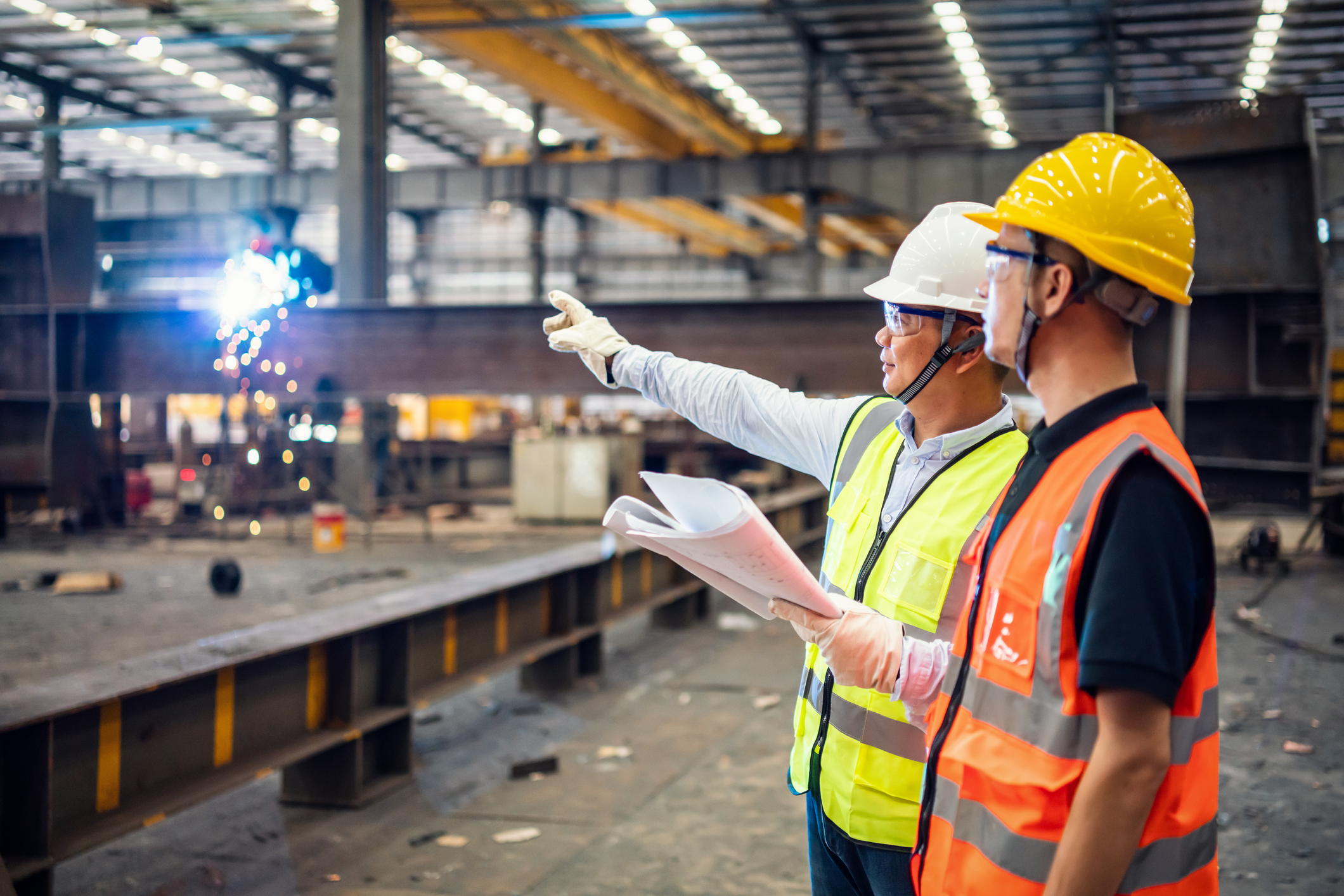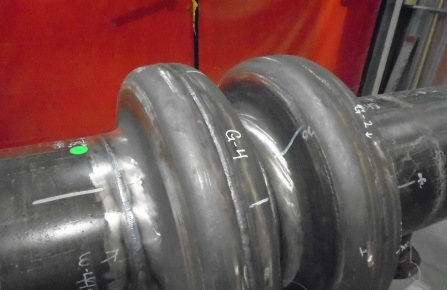Navigating Welding Inspection Gilbert Arizona: Vital Insights for Market Professionals
Discovering the Value of Welding Evaluation in Industrial Applications: Safeguarding Versus Failures and Enhancing Longevity
Welding inspection offers as a vital line of protection in industrial applications, making sure the structural integrity and integrity of welded components. By systematically recognizing problems such as porosity and incomplete blend, examinations not just avoid failures yet likewise expand the lifespan of vital possessions.
Function of Welding Examination
Welding examination acts as a critical safeguard in industrial applications, making sure that welded structures meet specified standards of high quality and security. This process includes a methodical examination of welds to verify their honesty, stamina, and conformity with recognized codes and specs. The role of welding inspection is complex, encompassing both visual analyses and non-destructive screening approaches, which may consist of ultrasonic, radiographic, or magnetic particle screening.

Additionally, welding examination plays a crucial function in governing compliance. Ultimately, the role of welding assessment is indispensable in advertising safety, improving performance, and safeguarding financial investments in industrial facilities.
Typical Welding Defects

One of the most widespread issues is porosity, identified by tiny gas pockets caught within the weld steel. This happens because of pollutants or incorrect protecting gas, endangering the weld's strength. One more substantial flaw is incomplete blend, where the weld steel fails to bond effectively with the base material, possibly leading to architectural weaknesses.
Fractures can additionally establish during or after the welding process, frequently credited to thermal anxieties or improper cooling rates. In addition, damaging, where the base steel is worn down along the weld grain, can compromise the joint and is commonly triggered by extreme heat input or wrong method.
Moreover, absence of penetration occurs when the weld steel does not get to the root of the joint, causing insufficient stamina. Comprehending these usual issues is crucial for examiners and welders alike to make certain that bonded structures satisfy safety and performance criteria, ultimately stopping possible failures in commercial applications.
Advantages of Routine Examinations
Regular assessments serve as an important safeguard in making sure the dependability and long life of welded frameworks. These examinations identify prospective defects and weak points that may compromise the honesty of welds, permitting timely removal prior to problems rise. By executing an organized assessment regimen, organizations can considerably minimize the risk of disastrous failures that might result in expensive downtime, tools replacement, or perhaps mishaps.
Moreover, normal assessments add to enhanced quality assurance throughout the welding process. By adhering to a constant assessment routine, business can make sure that their welding techniques fulfill established high quality standards and best methods. This not just cultivates a society of liability however also urges continuous enhancement among welding workers.
On top of that, regular inspections assist in far better upkeep preparation. By recognizing damage early, organizations can strategically set up replacements and repair services, reducing disruption to procedures. This proactive approach eventually results in extensive asset life-span and boosted general performance.
Finally, a dedication to routine examinations can improve a firm's track record in the industry. Stakeholders and customers progressively worth organizations that focus on safety and high quality, therefore improving depend on and possibly leading to enhanced business chances.
Sector Criteria and Laws
Abiding by industry requirements and laws is a fundamental element of welding examination that complements the benefits of normal analyses. These standards, established by companies such as the American Welding Society (AWS) and the American Culture of Mechanical Designers (ASME), supply a framework for finest methods in welding processes, materials, and examination strategies. Compliance with these regulations guarantees that welds fulfill the needed top quality and safety criteria, significantly lowering the danger of architectural failings.
Governing bodies like the Occupational Safety and Health Administration (OSHA) even more impose guidelines that secure employees and the setting during welding operations. By complying with these developed criteria, sectors can enhance the reliability of their elements and frameworks, ensuring they do as intended under various functional problems.
Furthermore, adherence to market criteria promotes uniformity in quality assurance, promoting smoother communication among stakeholders and regulative firms. This alignment not only decreases liability threats but additionally enhances the reliability of companies in competitive markets. Inevitably, compliance with welding requirements and guidelines is not simply a legal commitment; it is an essential investment in safety, efficiency, and long-lasting operational success.
Future Trends in Welding Examination
As markets continue to advance, the future of welding assessment is poised to incorporate sophisticated technologies that boost precision and effectiveness. One of one of the most considerable trends is the adoption of automation and robotics in evaluation procedures. Automated systems can carry out evaluations rapidly, reducing human mistake and enhancing throughput in making atmospheres.
Furthermore, the integration of fabricated intelligence (AI) and artificial intelligence algorithms will enable anticipating analytics, enabling real-time analyses and positive maintenance (Welding Inspection go Gilbert Arizona). By examining data from previous inspections, these innovations can determine patterns that could show possible failures, thereby prolonging the life expectancy of welded parts

Additionally, the pattern in the direction of digitalization will certainly result in enhanced information management systems that facilitate far better monitoring, reporting, and conformity with industry standards. In recap, the future of welding assessment is characterized by technical innovations that guarantee to considerably improve integrity, security, and functional effectiveness in various commercial applications.
Final Thought
In verdict, welding assessment serves a crucial feature in making certain the integrity and longevity of welded frameworks throughout numerous commercial applications. As developments in modern technology proceed to advance, the future of welding evaluation assures raised accuracy and efficiency, ultimately contributing to the longevity of critical infrastructures.
Welding inspection offers as an essential review line of protection in industrial applications, ensuring the architectural honesty and integrity of welded parts.Welding examination serves as an important secure in commercial applications, making certain that welded frameworks meet defined standards of top quality and security - Welding Inspection Gilbert Arizona. Ultimately, the duty of welding evaluation is indispensable in advertising safety, improving efficiency, and securing investments in industrial framework
These standards, developed by organizations such as the American Welding Society (AWS) and the American Culture of Mechanical Engineers (ASME), give click over here a structure for best methods in welding procedures, products, and inspection methods.In verdict, welding examination serves a crucial feature in ensuring the integrity and toughness of bonded structures across various commercial applications.